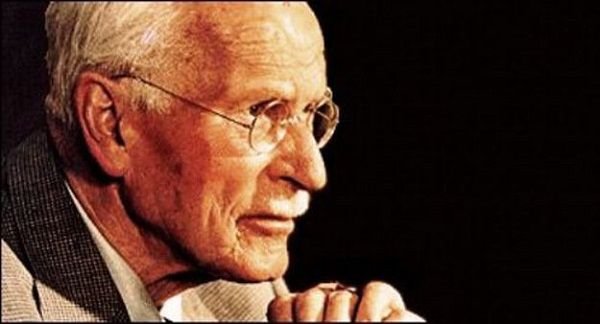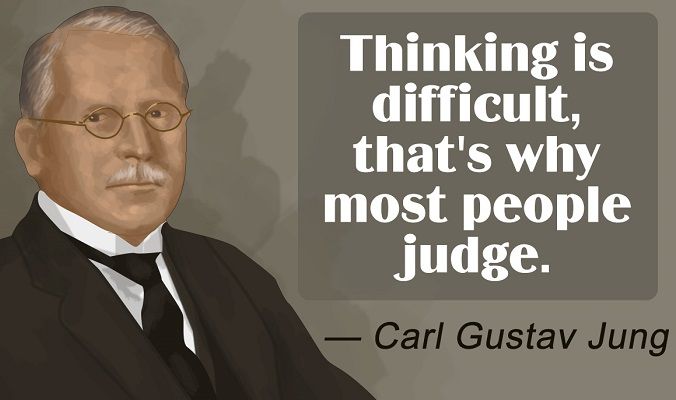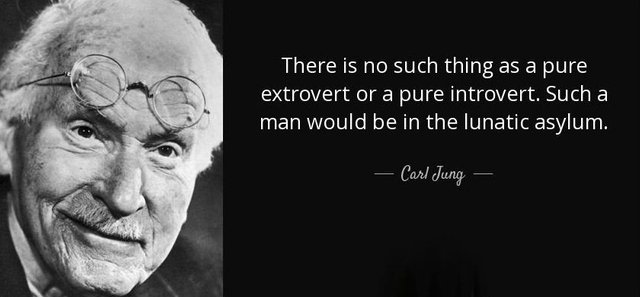Carl Jung - Personality Development and Theory of Psychological Types
The ideographic approach considers the individual as a unique structure. According to him, personalities are just some people. In nomotetism, all people are dignified. Forming the personality is a massive process. They are egalitarians - all people are socially equal. The individual is a single bearer of qualities, and individuality shows the totality of individual properties that make it unique. Personality is an image, a mask, a person, a social image of the individual. For some people, the person is the most noticeable, the brightest in the individual.
Jung's Theory of Personality - Analytical Psychology
According to him, the human psyche has two layers, but he says the unconscious is older and comes from past generations. Jung introduces the Collective Unconscious. The functions of consciousness are thinking, feeling, intuition and perception. Thinking and feeling are rational functions, and perception and intuition are irrational. Thinking has logic, intuitive has intuitive feelings. Between feelings and thinking are the senses, at the top is the experience. The subconscious is forever unconscious, it can not be explored. The subconscious covers are invasions. Invasions, emotions are collectively unconscious. Memories and pushings are personally unconscious. Memories are closest to consciousness. The collective unconscious consists of archetypes (primary image). They are their own image of the instincts (for example, the girl has the mother's archetype). Archetypes are innate. The most famous archetypes are the animus (male) and the anima(female). The symbols of the anime are forest, water, cat, grandmother, mother and others. Examining human personality through systematically organized typology, Yung creates a classical paradigm in psychology. The idea of psychological types pierces all his work. As with his predecessors, the underlying thesis is that human behavior is predictable and thus lends itself to classification. His numerous works include a thoroughly developed theory of the structure and dynamics of human psyche. The essence of Jung's theory is that the differences in human behavior are the result of the difference in the general orientation of libido interest. In this term he is fundamentally different from Freud, according to whom "libido" represents the individual's sexual energy. According to Jung, it is synonymous with mental energy, which is "the intensity of the psychic process its psychological value." The direction of movement of this energy affects the perception and appreciation of the surrounding world. This distinguishes two very different, even opposite, attitudes - extraverted and introverted. The orientation to one of the two attitudes, according to Jung, is still at a very early age, even one can say that it is innate. The difference in the way perceptions and judgments are used affects humanity
The extravagant attitude draws attention to the object and the objective facts, which is so dominant that all important decisions and actions are determined not by subjective values but by objective relationships. If it is durable and stable, we have an extravasated type. The determinative power of objective values in the life of the extravertera is much greater than that of the subjective. The most important and decisive factor is expected and comes from outside. Objective events, and especially those in the closest environment, define interests and occupy the attention. The actions of the extraverted type depend on the objective situation. He can easily adapt to existing outdoor conditions. Relationship between subject and subject is a relationship of adaptation. Outward orientation is so strong that at certain times the subjective needs are overlooked. "An extremely extrinsic attitude can become so inattentive to the subject that he is totally sacrificed for the so-called. objective requirements, for example, for the purpose of a lengthening activity - because the rules require increased attention, or because new and promising opportunities are emerging and need to be used immediately. " From the point of view of the compensatory attitude of the unconscious towards the conscious, the extravagant attitude causes an emphasis on the subjective factor. In this way, his attitude is of an interspersed nature. Extravertebral condition implies dependence on the subject. Man thinks, feels and acts in connection with the object. According to Jung, "If the extravagance is intellectual, the subject is placed on the subject. In an emotional extravagance, the subject is experienced in the subject. " The introverted type, unlike extrapolated, is oriented not to the objects and data they receive, but to the subject. Jung says: "The introvert puts a subjective view between the perception of the object and its own action, which does not allow this action to accept a character corresponding to the objective situation."
In the introverted attitude, one thinks, feels and acts, showing that the main factor of motivation is the subject, and the subject is of secondary importance. There is a tendency to give preference to the self, who replaces the whole person, subjectively realizing the entire consciousness, alienating it from the object. To the extent that the subject has occupied consciousness, by including the compensatory mechanism, the unconscious amplifies the influence of objective conditions and, to a great extent, puts it under their dependence By developing the theory of psychological type, Jung emphasizes two important laws. The first is that there are no pure types, personalities only extras or only introverts. These boundary states exist only theoretically. Each individual has extravertism and introversion, and only the dominance of one or the other tendency determines one of the two types. Secondly, within each group there is an infinite variety that derives from differences in cognitive orientations, but it also lends itself to refinement. And Jung makes a second step (second level) to classify the basis of mental functions: thinking, feeling, sensation, and intuition. Thus, both the extravertebral and the introvert can be of a mental, emotional, sensory or intuitive type.
Against the background of extracurricular attitude, thinking is object-oriented and objective. It draws its ideas from external factors by giving them a sense through logical relationships. Extraverted thinking is empirical. The extravagant feeling (experience) is guided by the common values and norms valid for the objective reality. Thinking and feeling are rational functions. Found as dominating in an extravagant attitude, they point to a reasonable and deliberate management of the individual's life. Sensing, as perceptual perception, is conditioned and dependent on the subject, and its subjective side is suppressed. The objects that create the strongest sensations are of particular significance to the subject, and he becomes sensuously attached to them. Intuition at the level of consciousness is perceived as a definite expectation, an overtaking vision that models, builds the object (situation) through future opportunities. When intuition in the extravasated type plays an important role, it determines its actions while parallel to that the other mental functions of thinking, feeling and especially feeling are suppressed. When one of the rational functions of thinking and feeling comes to a peak, the feeling as irrational goes into the background. Individuals with extracorporeal attitudes dominate any of the psychic sensation features or intuition Yung calls irrational. People with a focus on irrational mental functions take decisions not so much on the basis of reasonable judgment but on the basis of perceptions. Unlike the extravasated type that is controlled by external factors, an intuitive individual is under the influence of the subjective. His consciousness perceives external conditions, but breaks them through the prism of subjective determinants. Introverted thinking is orientated by the subjective material. It is distancing itself from the facts as such, for it they do not have the same meaning. His creative power is manifested in the formation of ideas, which are an abstract expression of external facts. Introverted thinking is mystical thinking.
The introverted feeling is determined by subjective factors, selectively referring to specific objects. Individuals dominated by such an attitude are silent and difficult to contact with others. Intraverted rational types are characterized by the subjective coloring of reasonable valuation activity. The introverted sensation as an attitude of the individual emphasizes the subjective part of the perception caused by the objective stimulus. Intuitive introversion is, in turn, indifferent to the impact of internal objects. Every single psychological type is a complex and mobile combination of basic attitude and mental functions. "The individual components work with each other and balance and make the system work, which is developed and perfected over the whole of human life. The dynamics of the type is determined by the way each function interacts with each other and the order in which the individual prefers to use them. " According to Jung, it is not possible to develop simultaneously and to the same extent all the psychic functions of the individual. The struggle for existence and adaptation of one of the functions is more developed and takes a dominant role. He calls it primary. It is preferred by the individual and is most commonly used, with which it is identified. Along with it there is a second, auxiliary function that plays the role of the dominant of the balance. An ancillary function has an unconscious, developmental potential. The primary function plays a dominant role in the so- the first half of man's life. In the maturity years and beyond, the auxiliary mental function succeeds in minimizing the accumulated imbalance. The function for which there are not enough favorable conditions for development and which lags behind is called "incomplete". There is also a drive for growth in it. Mental functions have mutual tolerance and intolerance (opposite). On this basis the two dichotomous scales of thought-feeling and feeling-intuition are formed. The types of preference for one of the two constructs in the thinking-feeling dichotomy are rational or evaluative. The other psychological opposition of perceptual sensation-intuition features is preferred by personal types, called irrational, perceptive. Feeling and intuition are two different, mutually exclusive ways in which the individual can perceive and know the phenomena of the inner and outer world. Jung distinguishes the sensory or intuitive type, as well as the introverted sensory or intuitive type.
Thinking and feeling, on the other hand, show the way in which the data obtained from reality is processed and a definite conclusion is reached. This modality provides information on how decisions are made on the basis of the facts and events. The assessment functions also base one of the basic attitudes and form an excited mental or emotional type, as in other individuals we have an introverted mental or emotional psychological type. The dominance in one person's type of one of the mental functions of a certain modality is combined with the auxiliary role of a psychic function of the other modality. Thus, by combining the elements of the three dichotomous rocks extravert-introversion, thinking-feeling and intuition-feeling in the psychological type theory of Jung, eight psychological types are defined: introvert thought, extraterrestrial thought, introvert emotional, extraemotional, introverted sensory, extrasensory,introverted intuitive, extraintuitive. Unlike most modern theories explaining the human personality, Jung's theory of psychological type focuses on the conscious aspects of the personality. He examines the personality as an integrated entity with a dynamically changing internal structure and complex relationships with the external environment. According to Jung, "The essence lies in the idea that seemingly random variations in human behavior are in fact overly ordered and consistent. They stem from the fundamental differences in the way people prefer to use their perception and judgment.


